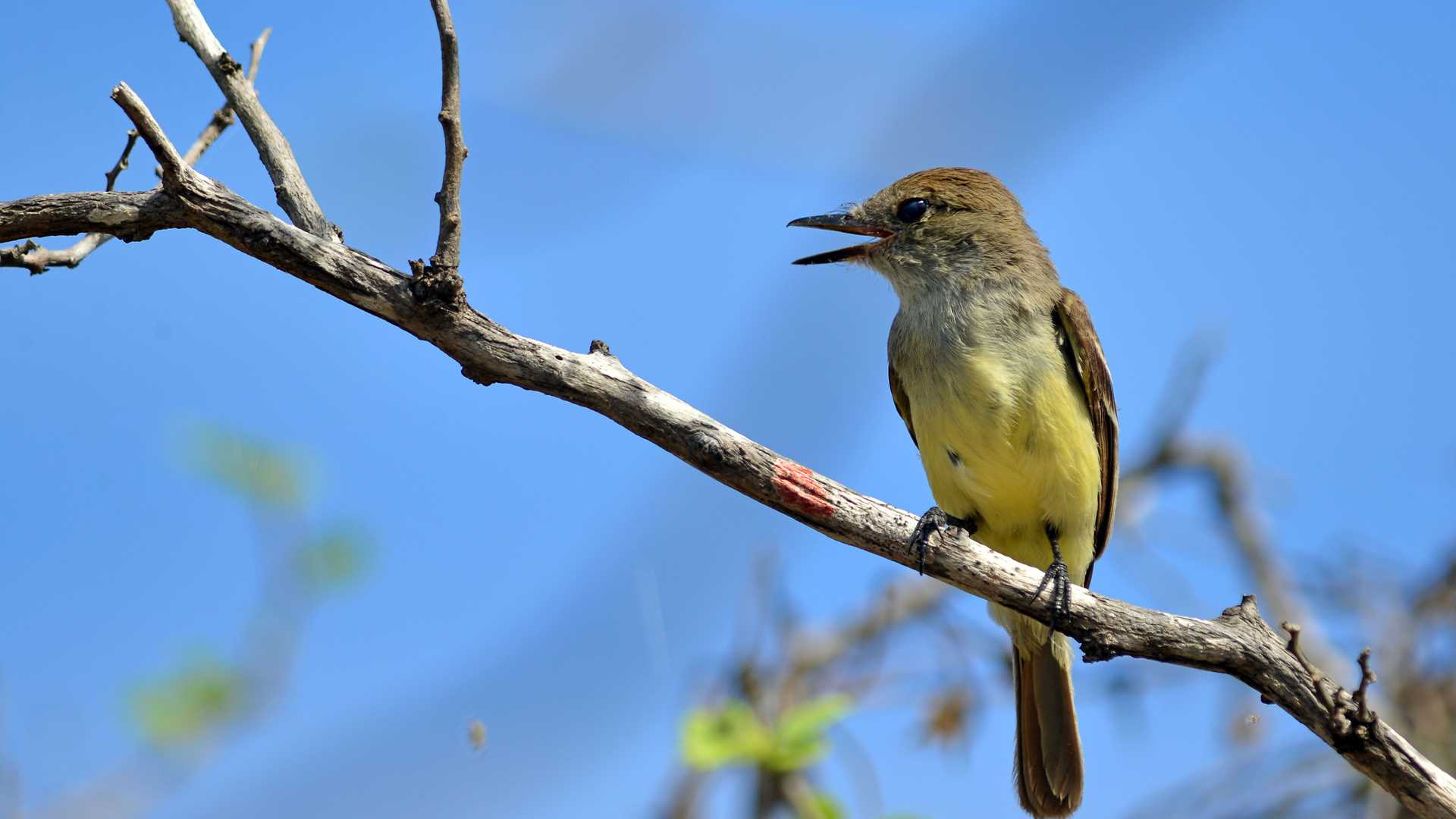Located in the center of the archipelago, Santa Cruz is one of the largest islands in the Galapagos. It is home to many of the archipelago's endemic and native species, including the Galapagos land iguana (Conolophus subcristatus). The iguana’s habitat is in the northwest of the island, a site we visited today.
With excellent weather conditions, we boarded Zodiacs after breakfast and headed toward Dragon Hill, a name that honors the land iguanas that are abundant here. Walking along the beach, a special surprise was waiting for us. We came upon a small pond that formed after the tide receded. Blue-footed boobies, pelicans, lava herons, grey-blue herons, and lava gulls were in a feeding frenzy as they fed on small fish trapped in the small lagoon. We enjoyed the unique spectacle and observed for several minutes. When we left the beach, another surprise was waiting for us. The small brackish lagoon was full of water due to recent rainfall. We observed Galapagos flamingos, black-necked stilts, sanderlings, whimbrels, and other waders as they walked through the shallows and fed on small shrimp.
Walking inland, the vegetation changed radically. The muyuyu and palo santo trees appeared dry and leafless. They were covered in lichens, giving them a grayish color. Not far from there, we observed our first land iguanas. Some walked through the dry grass indifferently, while others remained motionless in the middle of the path, showing no fear. We observed cacti with pads bitten by iguanas. Sharp and long spines do not prevent the incredible reptiles from eating the cacti. The reptiles use their strong claws, thick skin, and powerful jaws to remove the spines. The cacti feed the iguanas and quench their thirst, and the iguanas devour the succulent plants.
After visiting Dragon Hill, we returned to the ship to prepare to discover the incredible underwater world surrounding the small islet of Guy Fawkes. While snorkeling, we saw many whitetip reef sharks, stingrays, sea turtles, and even a sea lion feeding on a tuna in the sea.
After lunch, National Geographic Endeavour II sailed north toward Borrero Bay. At 3:00 p.m., we started our activities in the calm waters of the island. Guests had several options to choose from: kayaking, paddleboarding, or a Zodiac ride. Near the trees in the mangrove, we found a large number of sea turtles. We also spotted whitetip and blacktip sharks of different sizes. The sharks calmly swam in the shallow waters of the bay. Guests photographed lava herons, pelicans, and some frigatebirds in the mangroves.
When we returned to the ship, we found green sea turtles mating. Blue-footed boobies were in a feeding frenzy as they tried to catch some fish. Just before sunset, National Geographic Endeavour II circumnavigated around Daphne Mayor Islet. Our guests had the opportunity to taste different wines while observing the spectacular crater in the middle of the ocean as countless seabirds flew overhead. It was an excellent end to a great day in this natural paradise called the Galapagos.







